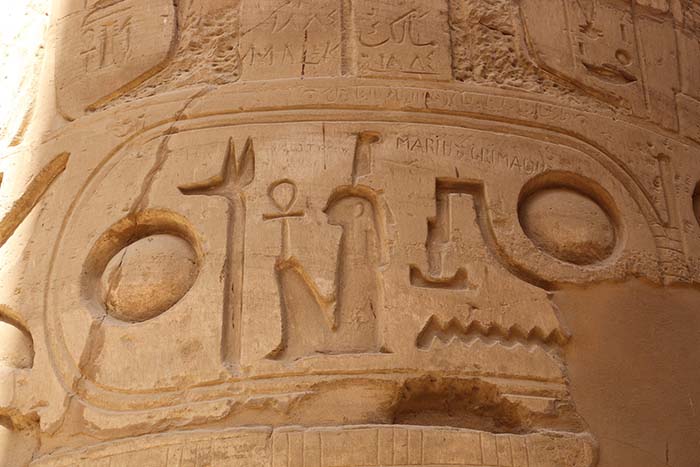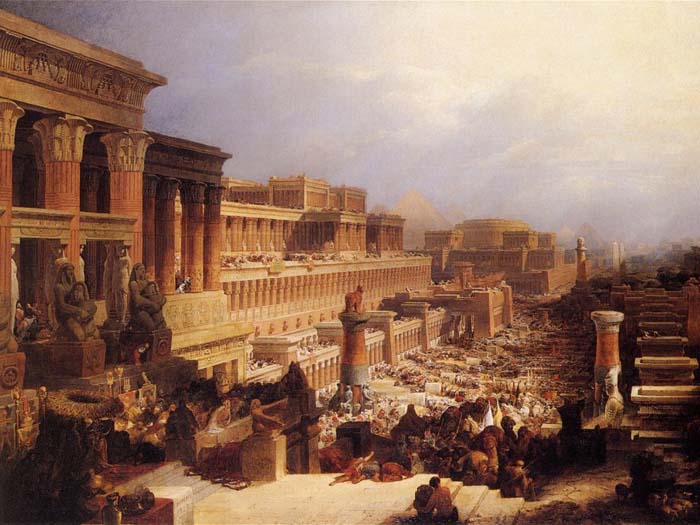Other Facts about the Ten Plagues of Egypt
Some Biblical scholars contend that Thutmose III was the pharaoh of the Exodus because the Bible says that Joseph placed his brethren in the land of Ramses, which was around 1406 BC. They cite this as one proof that Thutmose III was the pharaoh of the Exodus.
However, in modern society, many people, cities, streets, and so forth, have the same name. For example, there is the state of Georgia, Georgia is also a woman’s name, there’s the Georgian period from about 1714 to 1830, both Texas and Kansas have cities named Georgia, and so forth. It’s illogical to assume that the ancient Egyptians may not have followed this practice.
Another alleged proof that Thutmose III was the Pharaoh of the plagues is that the Bible says the Israelites built storage cities for the pharaoh, one of which was Ramses. The city could not have been named after the pharaoh if he had not yet been born. This, however, makes the assumption that the name was not used prior to the birth of the pharaoh, which isn’t logical.
Another alleged proof is that the spelling of the pharaoh’s name Ramses is different from the spelling of the city. Since many people of that time were illiterate, it’s reasonable and valid to assume that the spelling of names would vary from person to person. Language and spelling was not standardized like it is in modern times.
Many ancient Egyptians hadn’t the need to read or write on a daily basis. If they did, they used the services of a scribe. This type of spelling variation was common in the earlier days of the U.S. Census takers were sometimes only marginally literate and the same name could be spelled several different ways, depending on the person recording the event.

Terry Feuerborn – Cartouche of Pharaoh Ramses II
Some Biblical scholars assert that one cannot believe the Bible and ascribe to the theory that Ramses II was the pharaoh of the plagues. However, the Bible lays out exactly the chronological events of the plagues. It isn’t a coincidence that the exact sequence of events is verified by stalagmites taken from caves in Egypt, the presence of volcanic ash and pumice stone in an area where there has never been a volcano, and a complete change of climate during the reign of Ramses II, which would have accounted for these events.
The fact that Pi-Ramses was a thriving city until the time of the plagues and then inexplicably abandoned lends further credence to the theory that Ramses II was pharaoh at the time of the plagues. When the pharaoh agreed to let the Hebrews leave, his entire workforce vanished overnight. There would have been no workers to perform all of the labor that kept the city functioning.
Since the Egyptians had given all of their valuables to the Hebrews when they left, there might have been little left with which the Egyptians could sustain themselves. Since the majority of the pharaoh’s army had drowned, there was no fighting force to conquer and loot other cities. There was no alternative but to abandon the city and relocate to other areas.
These environmental and historical facts, which have been documented and are indisputable, lend credence to the theory of Ramses II being the pharaoh of the Exodus rather than refuting it in favor of Thutmose III. Bible scholars appear to be doing the same thing that they are accusing scientists and archaeologists of doing: making the Bible conform to their ideologies.

The Israelites Leaving Egypt, oil on canvas, by David Roberts
The only plague not accounted for by scientific evidence is the death of the firstborn male. As a best guess, archaeologists postulate that a fungus had infected the wheat. Since the firstborn male, because of his preferential standing, would have consumed more of the best grain than others would have, all of them contracted the fungus and died. This seems unlikely, since infants died also and they would probably not have been eating grain.
However, there is a similar historical precedent. Ergot, a fungus that infects rye grain, is believed to have been the cause for the hallucinations, trances, seizures, and violent behaviors that occurred to some settlers in the winter of 1692 in the American colonies and precipitated the Salem witch trials.
Although ergot didn’t cause death in the settlers, and it’s unclear why it affected some people and not others, a similar fungus could have infected the Egyptians’ grain. Especially since the burgundy blood algae contaminated the Nile, there could have been a fungus present that would have contaminated the wheat.
This doesn’t explain the infant deaths, but given the sequence of events that constituted the ten plagues, and the duration of them, which is estimated at about nine or ten months, a high infant mortality rate isn’t unlikely. Otherwise, maybe best explanation for the death of all the firstborn males, and only them, is indeed a supernatural occurrence or divine intervention.
















































